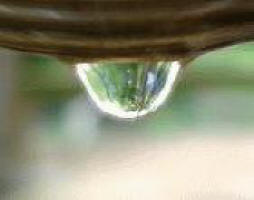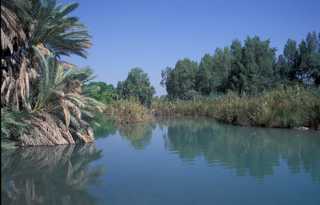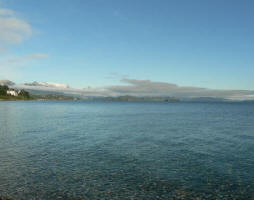 Lebanon: Protection of Jeita Spring
Lebanon: Protection of Jeita Spring
In July 2010 a German-Lebanese Technical Cooperation project started with the aim to reduce the pollution risks for the drinking water supply of Beirut through measures to be implemented in the Jeita catchment. With the rapid and uncontrolled expansion of residential areas in the catchment of Jeita spring following the end of the civil war in Lebanon, pollution of Jeita spring had become extensive. The main reason for this pollution was that wastewater was not collected and treated. At many places wastewater was even injected into wells. The main tasks of the project are to
- provide advice to the partner institutions and KfW Entwicklungsbank concerning the concept and environmental impact assessment for wastewater facilities to be built in the project area;
- delineate groundwater protection zones for Jeita spring and other relevant springs in the project area and implement them. This implies landuse restrictions in protection zones 1 and 2;
- establish a monitoring system for water quality and quantity;
- prepare a proposal for an improved water conveyance system from Jeita to Dbaye, i.e. between the source and the drinking water purification plant.
On the German side the project is implemented by the Federal Institute for Geosciences and Natural Resources (BGR). Concerning task 1, the project works closely together with KfW Entwicklungsbank and its consultant GITEC. Task 2 is done in scientific cooperation with University of Göttingen, Department of Applied Geology. On the Lebanese side the project has three main cooperation partners: the Council for Development and Reconstruction (CDR), the Water Establishment of Beirut and Mount Lebanon (WEBML) and the Ministry of Energy and Water (MoEW).
The hydro-lithostratigraphic sequence occurring in the project area is shown in this figure. The aquifer system consists of two main limestone aquifers, the Jurassic J4 and the Cretaceous C4 aquifers, separated by an aquitard. The Jurassic J4 aquifer is more than 1000 m thick, while the Upper Cretaceous C4 aquifer is up to around 600 m thick.
Jeita spring emerges from the Jurassic limestone aquifer, which is highly karstified. In general karstification is especially high where limestone had been exposed since long time and where present day rainfall is high, i.e. at elevations between 1,000 m and 2,600 m. On the Cretaceous plateau, located at elevations > 1800 m asl, karstification is very intensive. The plateau shows virtually no surface water runoff features and rainfall and melting snow directly infiltrate in the groundwater through fields of dolines. This plateau, which iscovered in winter by 2-4 m of snow plays an important role for groundwater recharge. It is believed that about 75 % of snow and rainfall in this area contribute to groundwater recharge. Some climate change scenarios suggest a considerable warming in this region, which would have severe consequences for the availability of water.
---
Report of the project:
http://www.facebook.com/pages/Public-Awareness-Campaign-on-Groundwater-Protection-in-Keserwan/324217401009605
| Contact information |
Dr. Armin Margane & Dr. Georg Houben
(email: Armin.Margane@bgr.de ; Georg.Houben@bgr.de) Phone: +961 9 230051 ; +961 70 398027 ; +49 (0)511-643-3745 Fax: +49 (0)511-643-2304 // +49-(0)511-643-2373 Fax: +49-(0)511-643-3661 |
|---|---|
| News type | Inbrief |
| File link |
http://www.bgr.bund.de/EN/Themen/Wasser/Projekte/laufend/TZ/Libanon/jeita_fb_en.html |
| Source of information | BGR |
| Keyword(s) | Groundwater Protection |
| Subject(s) | HYDRAULICS - HYDROLOGY , METHTODOLOGY - STATISTICS - DECISION AID , NATURAL MEDIUM , PREVENTION AND NUISANCES POLLUTION , RISKS AND CLIMATOLOGY , TOURISM - SPORT - HOBBIES |
| Relation | http://www.emwis.net/initiatives/fol060732/protection-jeita-spring |
| Geographical coverage | Lebanon, |
| News date | 22/10/2012 |
| Working language(s) | ENGLISH |
 you are not logged in
you are not logged in





